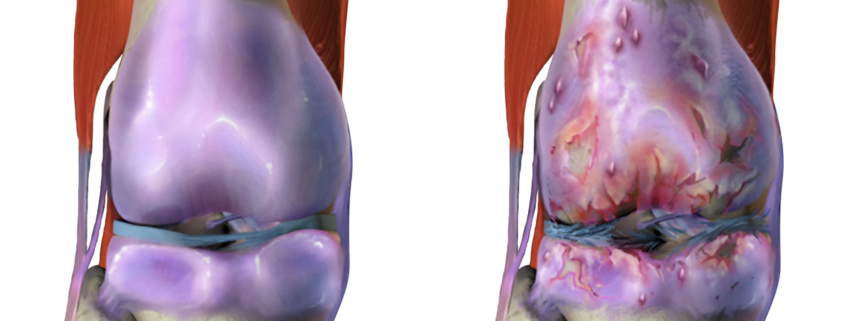Knee Arthritis

Overview
Knee arthritis is a common debilitating condition, where the joints in the knee become inflamed, causing chronic pain and impaired functionality. This condition affects countless people worldwide, with aging adults being particularly vulnerable. Arthritis occurs when the cartilage that cushions your knee joint starts to wear away, leading to painful bone-to-bone contact, inflammation, and oftentimes stiffness.
Types
There are three predominant types of arthritis that may affect the knees:
-
- Osteoarthritis: This is the most frequent type, which is a wear-and-tear condition that occurs in aging adults.
-
- Rheumatoid Arthritis: This is an autoimmune condition where your immune system attacks the lining of your joints, leading to severe inflammation and pain.
-
- Post-traumatic Arthritis: This type usually emerges after a knee injury, which could be a tear in the meniscus, ligament damage, or bone fracture.
Causes
Numerous factors can increase your risk of developing knee arthritis, including:
-
- Age: The risk rises as you age.
-
- Weight: Excessive weight puts additional strain on your knee joints, potentially leading to arthritis.
-
- Gender: Women are more likely to develop this condition than men.
-
- Genetics: Knee arthritis can run in families.
-
- Injuries: Knee injuries can cause damage to the cartilage, leading to arthritis, often years after the injury.
Symptoms
Common symptoms of knee arthritis include:
-
- Pain during or after movement.
-
- Stiffness, particularly in the morning.
-
- Swelling and inflammation.
-
- Decreased mobility and difficulty in walking or climbing stairs.
Some less common symptoms might include loss of strength in the knee and a grating or crackling sound when you move your knee.
Diagnosis
Diagnosing knee arthritis typically involves:
-
- Clinical examination: Your doctor examines your knee for swelling, pain, and mobility.
-
- X-ray: It can show changes in the joint’s structure.
-
- MRI: This can provide a detailed picture of your knee.
-
- Blood tests: It can be required to discern some forms of arthritis.
Treatment Options
Treatment for knee arthritis can be classified into two main categories:
-
- Conservative treatments: This forms the primary line of treatment and encompasses physical therapy, pain management through NSAIDs, usage of assistive devices, and weight management.
-
- Surgical treatments: If conservative measures do not provide relief, surgery, such as arthroplasty (knee replacement) or arthroscopy, may be necessary.
Living With Knee Arthritis
While the condition is chronic, by taking steps such as regular low-impact exercise, maintaining a healthy weight, using heat or ice to alleviate pain, or physical therapy, one can manage life with arthritis. Pain management techniques can include over-the-counter medications, corticosteroid injections, or topical pain relievers. Patients should also consider psychological coping mechanisms like stress management and cognitive behavioral therapy.
When to Seek Help
While knee arthritis is a chronic condition, there are certain symptoms that require immediate medical attention, such as:
-
- Intense and sudden pain in the knee.
-
- Noticeable deformity or large swelling in the knee or leg.
-
- The inability to move or bear weight on the knee.
-
- Persistent fever along with redness, pain, and swelling in the knee, which could signify an infection.
In these circumstances, one should seek immediate medical attention to prevent further complications and ensure appropriate care. Remember, early detection and management are key in controlling the progression of knee arthritis.
